
The Suspension System
When reviewing the suspension system components and how they work together, remember that a bicycle in motion is more than wheels turning. As the tire revolves, the suspension system is in a dynamic state of balance, continuously compensating and adjusting for changing riding terrain and conditions. Today’s bicycle suspension system is engineering at its best.
The components of the suspension system perform these basic functions:
1. Maintain correct ride height and support bike and rider weight
2. Reduce the shocking effects of the terrain
3. Keep the tires in contact with the terrain
However, in order for this to happen, all the suspension components, both front and rear, must be in good working condition.
Main Components of the Suspension System
The main components of a bicycle suspension system are the Springs (air/coil), Damping System, Bushings and Stanchion Tubes.
Suspension is the compressible link between the rider and the ground. When an additional load is placed on a rider or, when the rider meets a bump in the trail, the springs in the suspension will absorb the load by compressing. The springs are a very important component of the suspension system that provides efficiency and ride comfort. The damping system helps control how fast the springs and suspension are allowed to move; this is important in keeping tires in firm contact with the trail.

Hitting the lip of a jump your springs compress, storing energy. If you didn’t have any damping slowing down the return of that energy your springs could shoot you over the bars when you leave the lip.
During the vertical (up and down) movement of the suspension system, the upward suspension travel that compresses the spring is called compression. The downward travel of the wheel that extends the spring is called rebound. When the spring is compressed, it stores energy. Without the damping system the spring will extend and release this energy at an uncontrolled rate. The spring’s inertia causes it to bounce and overextend itself. Then it re-compresses, but will again travel too far. The spring continues to bounce at its natural frequency until all of the energy originally put into the spring is dissipated.
If the damping system is worn or blown and the bicycle meets a bump in the trail, the bicycle will bounce at the frequency of the spring until the energy of the bump is used up. This may allow the tires to lose contact with the terrain.
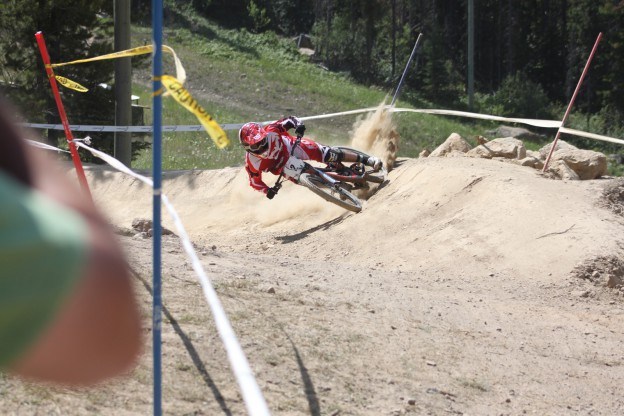
If Clan rider Adriano’s suspension was blown and the compression damping was not working he would blow through his travel hitting a berm this hard. And probably get ejected to the other side of the trail causing him to go off line.
By controlling spring and suspension movement, the rider will have more traction and control when riding the trail.
Suspended and Un-Suspended weight; does this matter?
Suspended Weight is the weight supported by the springs. For example, the rider’s body, drivetrain, cockpit, frame, etc, would be suspended weight.
Un-Suspended Weight is the weight that is not carried by springs, such as the tires, wheels, and brake assemblies.
The springs allow the rider and frame to ride undisturbed while the suspension and tires follow the terrain. Reducing un-suspended weight will provide less terrain shock. A low un-suspended weight provides improved ride and also improves tire traction.
Inertia is the tendency of a body to resist acceleration; the tendency of a body at rest to remain at rest or of a body in straight line motion to stay in motion in a straight line unless acted on by an outside force.
What does this mean? The lighter you can make the Un-Suspended weight in your bike the easier it is for the suspension to start moving through the compression and rebound stroke, and once it starts going one way the lighter it is the easier it will be for it to change direction and start going through the rebound stroke. When you are bombing down a hill having less un-suspended weight will help your bike glide over roots, rocks, sluts and ruts.

The more your wheels are on the ground the easier you can stay on your line through a turn. North Shore Bike Fest Chainless DH.
Below is a simple suspension service. I am not going to explain a specific procedure, but I will show some little tips and tricks for when you do it yourself. Most manufacturers have the service instructions/procedures on their websites. Doing an oil change does not have to be hard. Take your time, clean and set up your workspace beforehand and always watch or read the tech vid/document.
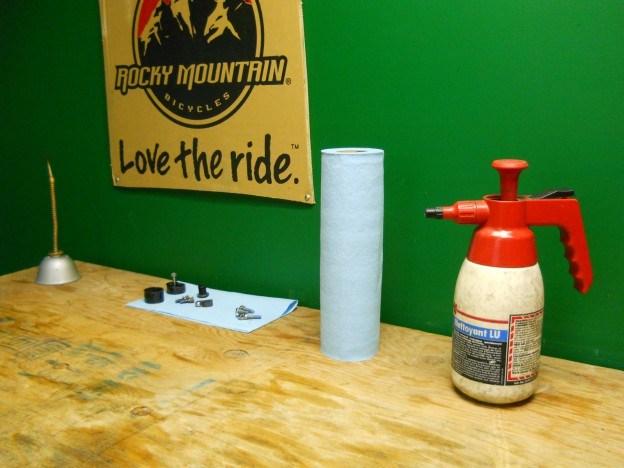
Always start with a clean bench. Make sure to use lint free cloths and isopropyl for cleaning all the parts. Most of the time you don’t need many specific tools when doing an oil change.
After servicing suspension myself, I really started to understand why it’s important to change the oil frequently. Suspension oil breaks down over time with heating and cooling, plus your fork seals are never going to block 100% of the water or dirt from coming in. Suspension forks have tight tolerances with oil moving throughout the fork; if this oil is watery or dirty then you have watery dirt wearing all the components of your suspension prematurely. Below are a couple pictures from some fork services I have done.

This fork was way past its service interval. Water got into the system and corroded the stanchions. Before the service the fork felt good. You would not have thought it needed service.
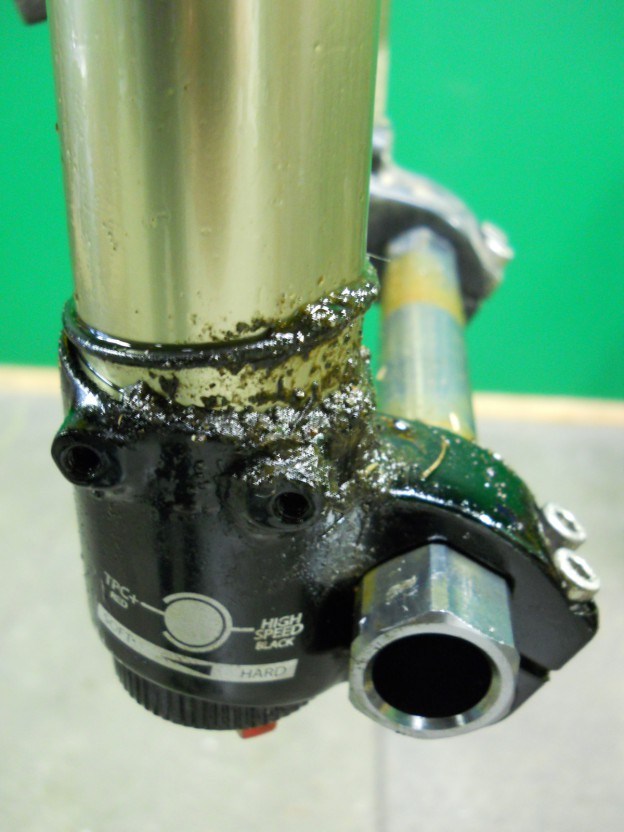
When a seal blows it shows. Although the suspension will still work, you can get oil everywhere, over your brake caliper, pads and rotor affecting the brake system.
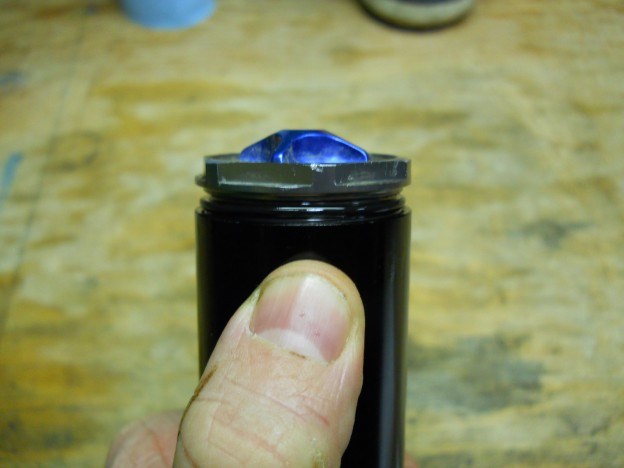
When removing your top cap, listen for a little air that will be released. When riding, your suspension oil heats up as it is forced through the damping system and bushings. When the oil is cooled it releases a little gas, and this gas can build up affecting your suspension. Doing a tune before a race/ride weekend, I always release this gas when setting my air pressure.
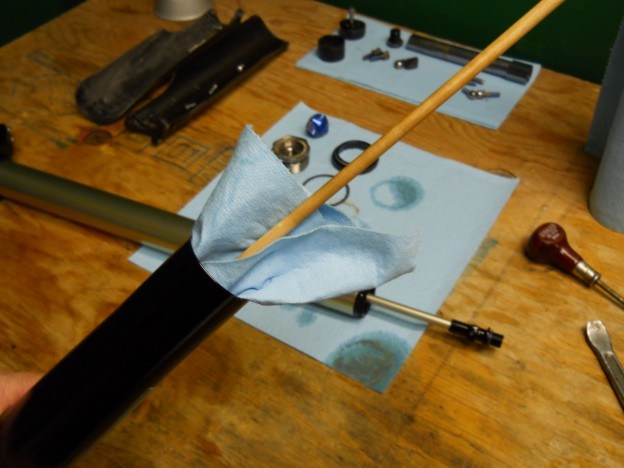
Always use a lint free rag and isopropyl alcohol when cleaning. Lint and degreaser residue can affect the system when you have it all back together.
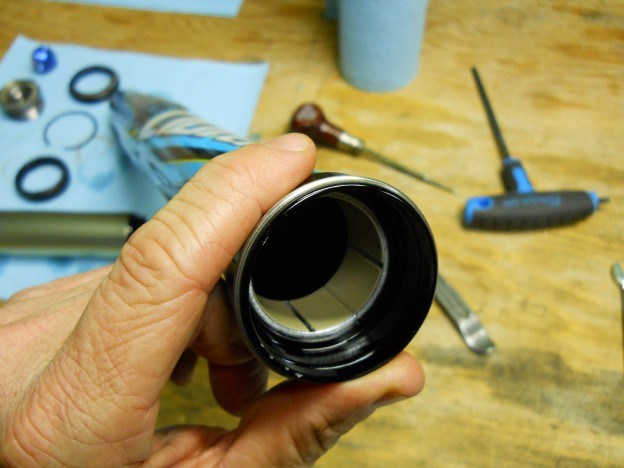
Bushings are what the stanchion tubes glide across. These Dorado bushings have little grooves in them to aid in oil getting behind them to lower the friction. If that oil was dirty…
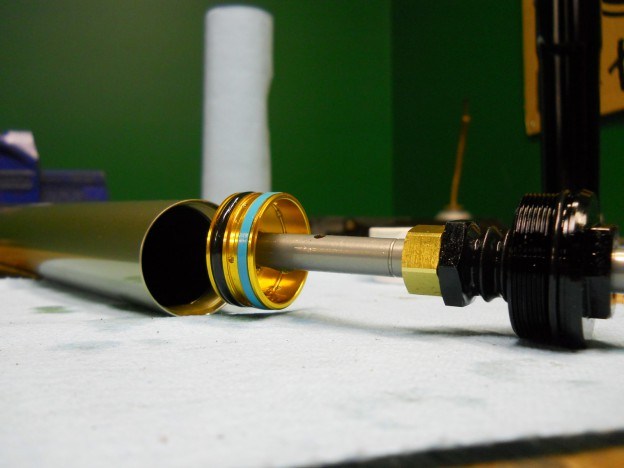
Air systems are high pressure systems that require very tight seal tolerances. If these seals are not lubed properly you will have a lot of friction and heat in your system. The heat can affect your ride and damping system, break down the oil faster and potentially not seal properly causing loss of air.
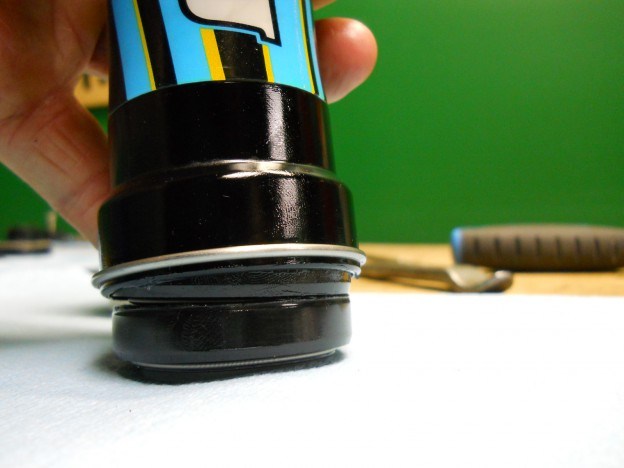
Seals sometimes require a specific seal setter when installing. Some forks you can set them by hand. On this Dorado I can set the seal using the old seal.
I always believe bicycle maintenance should at least be tried by the bike owner. When you understand how things work it can help make your setup easier and your ride more enjoyable. Don’t be scared to attempt Suspension oil changes on your own. Remember to watch the tech video specific to your fork, make sure you have all the tools required and a clean work space. At the end of the day you can always take it to the Bikeroom, your local shop or SuspensionWerx.
This article is here to push you to check out the service/tech video on your suspension system, even if you are not going to try and tackle it on your own.
bryson
This article is brought to you by the Bikeroom, a Bicycle Mechanic Training Facility for everyone located right here on the North Shore. Visit us at www.bikeroom.ca
What kind of suspension user are you… a self-servicer, a take it to the shop regularly, or a forget it until it explodes kind of guy?
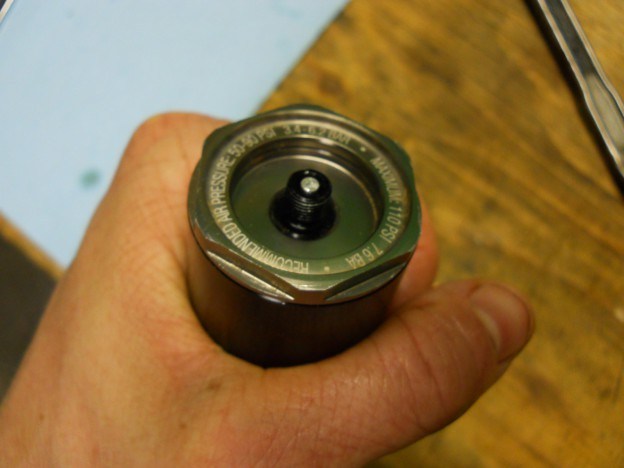
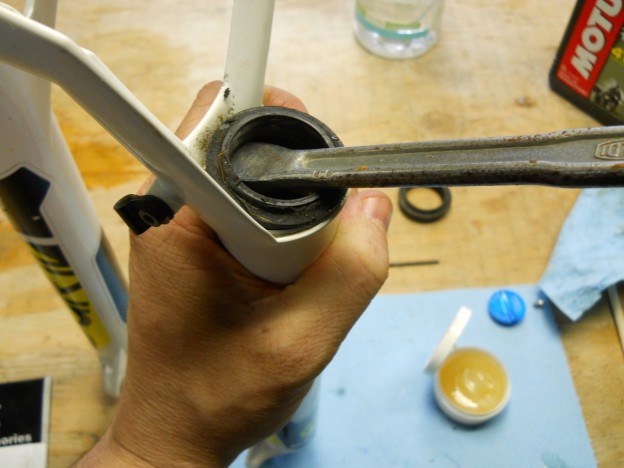







Comments
BicycleHub
11 years, 2 months ago
Great write up, and I agree with the idea of people getting to know their own equipment. There will always be intimidating jobs but even attempting them once will help you feel closer to your bike! They also help ensure that you recognize high quality work when you see it!
Reply
rob c
11 years, 2 months ago
@bryson
"I always believe bicycle maintenance should at least be tried by the bike owner. When you understand how things work it can help make your setup easier and your ride more enjoyable. Don’t be scared to attempt Suspension oil changes on your own."
^^ agreed
it always stuns me how many mountain bikers want to pay top dollar for their suspension (bike) and don't ever take the time to learn how to do basic suspension servicing to keep their bike running sweet
we are not talking rocket science, but fork "lowers" servicing and basic air can servicing, or to make it even more basic, post-bike washing external lubrication of fork, shock, seatpost seals using dry chain lube or silicon spray
I understand that for some riders they don't have the aptitude but its certainly not hard when shown how, takes only minutes with basic tools and consumables, and makes a massive difference to both the durability of suspension parts and more importantly the ride quality / performance..
Reply
Jeff at the Bikeroom
11 years, 2 months ago
Thanks hampstead_bandit, especially with all the tech vids/docs out there.
Jeff
Reply
wa90
11 years, 2 months ago
Given the time, sure, but families and demanding jobs impact the time you have available to spend working on your bike and riding it.
For me, the really time consuming stuff - or things requiring a seemingly never-ending set of custom tools (forks, brakes, even seatposts and cranks these days) - the choice is clear and I'm happy for others to be the experts if it means I get to ride a bike that works!
Reply
CoilAir
11 years, 2 months ago
"help your bike glide over roots, rocks, sluts and ruts."
Dammit, those sluts always throw me off line.
Reply
jadavis
11 years, 2 months ago
I feel like this leaves out the most important part of suspension, the spring. With the correct spring and damping set up the suspended mass is actually completely irrelevant. The fork can be modeled with the equation mx"+Bx'+kx=0, where x" is acceleration, x' is velocity, x is displacement of the spring, B is the damping coefficient, and k is the spring constant. The suspension of a bike that is ten times heavier would theoretically have the same response if B and k were also ten times greater.
Long story short, by changing your internals you can get the fork to have very similar responses regardless of mass (as long as your bikes is a reasonable weight).
Reply
Please log in to leave a comment.